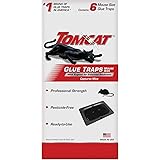
Are your plants shivering in the cold? Don’t let Jack Frost claim your beloved greens!
Shield Your Greens: A Guide to Winter Plant Protection is here to help you create a sanctuary for your plants during the chilly season.
This comprehensive guide will walk you through selecting winter-resistant plants, preparing them for freezing temperatures, and providing insulation and barriers against frost.
With proper care, you can ensure your plants thrive and flourish, becoming the envy of every green thumb in the neighborhood.
Key Takeaways
- Choose winter-resistant plants based on USDA hardiness zone
- Provide adequate insulation for plant roots with thick layer of organic mulch
- Create protective barriers against frost with organic mulch and breathable row covers
- Implement proper watering techniques including deep watering at the root level and adjusting frequency based on weather conditions
Selecting Winter-Resistant Plants
Choose winter-resistant plants that will thrive in your garden during the colder months.
When it comes to selecting plants that can withstand the harsh winter conditions, there are a few key factors to consider.
First, look for plants that are hardy in your specific USDA hardiness zone. These plants have been tested and proven to survive in your region’s cold temperatures.
Additionally, consider the plant’s ability to tolerate frost and low temperatures. Look for varieties that have been bred to withstand freezing temperatures and have a high cold hardiness rating.
It’s also important to choose plants that have good disease resistance, as winter can bring conditions that promote the spread of diseases.
Preparing Plants for Cold Temperatures
To properly prepare your plants for cold temperatures, there are several steps you can take to protect them from the harsh winter conditions. Here are three key actions you should consider:
- Mulching: Apply a layer of organic mulch around the base of your plants to provide insulation and protect the roots from freezing temperatures. This will also help retain moisture in the soil, preventing dehydration.
- Watering: Before the first frost, ensure that your plants are well-watered. Moist soil retains heat better than dry soil, helping to maintain a more stable temperature around the roots. However, be careful not to overwater, as excessive moisture can lead to root rot.
- Pruning: Trim back any dead or damaged branches from your plants before winter sets in. This will prevent diseases and pests from spreading, and allow the plant to focus its energy on healthy growth come spring.
By taking these precautions, you can give your plants a better chance of surviving the cold temperatures.
Now let’s move on to the next section, where we’ll discuss providing adequate insulation for plant roots.
Providing Adequate Insulation for Plant Roots
Ensure your plants have sufficient insulation for their roots by using a thick layer of protective mulch. Mulching is an effective method to protect your plant’s roots from the harsh winter conditions. The layer of mulch acts as a barrier, preventing temperature fluctuations and reducing the risk of frost damage. Organic mulches such as straw, wood chips, or shredded leaves, are excellent choices as they provide insulation while also improving soil structure and retaining moisture. Apply a layer of mulch around the base of your plants, extending it to cover the root zone. Aim for a thickness of 2-4 inches to provide adequate insulation.
Mulching also helps to suppress weed growth and prevents soil erosion. With proper insulation for the roots, your plants will be better equipped to withstand winter’s challenges.
To further protect your plants from frost, it’s important to create additional barriers.
Creating Protective Barriers Against Frost
To further protect your plants from frost, it’s crucial to regularly monitor weather forecasts and take proactive measures. Frost can damage your plants and hinder their growth, so it’s important to create protective barriers to shield them from freezing temperatures. Here are three effective ways to protect your plants from frost:
- Mulching: Apply a layer of organic mulch, such as straw or wood chips, around the base of your plants. Mulch acts as an insulating layer, protecting the roots and soil from extreme temperature fluctuations.
- Row covers: Use lightweight, breathable row covers to create a physical barrier between your plants and the cold air. These covers allow sunlight, air, and water to reach your plants while trapping heat and preventing frost damage.
- Portable greenhouses: Set up portable greenhouses or cold frames around vulnerable plants. These structures provide additional insulation and create a microclimate that shields your plants from frost.
Implementing Proper Watering Techniques
Keep your plants hydrated throughout the winter by practicing proper watering techniques. It is essential to provide your plants with adequate water during the colder months to ensure their survival and health. However, it is equally important to avoid overwatering, as this can lead to root rot and other issues. To help you understand the best watering practices for winter plant care, refer to the table below:
| Watering Technique | Description |
|---|---|
| Deep Watering | Slowly watering the plants at the root level, allowing the water to penetrate deeply into the soil. This encourages the roots to grow deeper and become more resilient. |
| Morning Watering | Watering the plants early in the morning allows the foliage to dry quickly, reducing the risk of fungal diseases that thrive in damp conditions. |
| Watering Frequency | Adjusting the watering frequency based on the weather conditions and the moisture level of the soil. It’s important to avoid watering too frequently, as this can lead to waterlogged soil. |
| Mulching | Applying a layer of mulch around the plants helps to retain moisture in the soil, reducing the need for frequent watering. It also provides insulation and protects the roots from extreme temperature fluctuations. |
Conclusion
In conclusion, protecting your plants during the winter months is crucial for their survival. By selecting winter-resistant plants, preparing them for cold temperatures, providing insulation for their roots, creating barriers against frost, and implementing proper watering techniques, you can shield your greens from the harsh winter conditions.
Remember, just as a shield protects a warrior in battle, these techniques will safeguard your plants and ensure their health and vitality throughout the winter season. Don’t let the cold weather defeat your green thumb!







